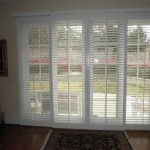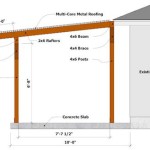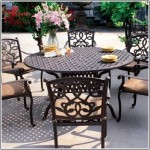Patio Door Single Panel Curtains: A Comprehensive Guide
Patio doors offer an abundance of natural light and seamless access to outdoor spaces, enhancing the aesthetic appeal and functionality of a home. However, managing sunlight, preserving privacy, and controlling indoor temperature can pose challenges. Single-panel curtains provide a practical and stylish solution for addressing these concerns specifically catered for patio door use.
A single-panel curtain is designed to cover the entire width of a patio door with a single piece of fabric. This design eliminates the gaps that can occur with multiple panels, ensuring better light blockage and privacy. These curtains are available in a variety of fabrics, colors, and styles, allowing homeowners to customize their space while addressing functional needs effectively.
Benefits of Using Single Panel Curtains for Patio Doors
Several advantages arise from choosing single-panel curtains for patio doors. These include superior light control, enhanced privacy, improved energy efficiency, and streamlined aesthetics. The selection of a specific curtain should consider the desired level of light blockage, the need for insulation, and the overall design scheme of the room.
Superior Light Control: One of the primary reasons homeowners opt for curtains is to manage the amount of sunlight entering the room. Patio doors, due to their large glass surface, can allow excessive light, leading to glare, faded furniture, and discomfort. A single-panel curtain, especially when made of a light-blocking material, provides excellent control over the amount of light entering the space. This is particularly beneficial in rooms where sleep quality or screen visibility are important.
The level of light control is directly related to the fabric’s opacity. Sheer curtains filter light, creating a soft, diffused glow, while blackout curtains eliminate almost all light. Dim-out curtains fall somewhere in between, reducing glare and providing a moderate level of darkness. The choice depends on the specific needs of the room. For example, a bedroom may benefit from blackout curtains, while a living room might benefit from dim-out or light-filtering options.
Enhanced Privacy: Patio doors offer expansive views, but they can also compromise privacy, particularly in densely populated areas. Single-panel curtains offer a simple and effective way to shield the interior from outside observers. When closed, the curtain provides a visual barrier, preventing onlookers from seeing inside the home.
The effectiveness of privacy curtains depends on the fabric’s weave and color. Densely woven fabrics are more opaque and provide greater privacy than loosely woven fabrics. Darker colors generally offer better privacy than lighter colors, as they absorb light rather than reflecting it. Homeowners should consider the level of privacy required and choose a fabric accordingly. It's also important to consider the time of day. During the day, lighter fabrics can still provide reasonable privacy, but at night, when interior lights are on, darker and denser fabrics are often necessary.
Improved Energy Efficiency: Patio doors can be a significant source of heat loss in the winter and heat gain in the summer, leading to increased energy consumption and higher utility bills. Single-panel curtains, especially those with thermal or insulating properties, can help to mitigate these effects. These curtains act as a barrier, reducing the transfer of heat through the glass.
Thermal curtains are typically made with multiple layers of fabric, including a layer of insulating material such as fleece or foam. These layers trap air, creating a thermal barrier that reduces heat transfer. In the winter, thermal curtains help to keep heat inside the room, reducing the need for supplemental heating. In the summer, they help to block out solar heat, keeping the room cooler and reducing the need for air conditioning. The energy-saving benefits of thermal curtains can result in a noticeable reduction in monthly utility bills.
Streamlined Aesthetics: Beyond their functional benefits, single-panel curtains contribute to the overall aesthetic appeal of a room. Their clean, uncluttered design creates a sense of spaciousness and sophistication. Unlike multiple panels that can appear busy or fragmented, a single panel offers a smooth, continuous line that enhances the visual flow of the room.
Single-panel curtains are available in a wide range of colors, patterns, and textures, allowing homeowners to coordinate them with existing décor. They can also be used to add a pop of color or a touch of elegance to a room. The choice of fabric and style should complement the overall design scheme of the space. For example, a minimalist room might benefit from a simple, solid-colored curtain, while a more traditional room might call for a patterned or textured fabric.
Factors to Consider When Choosing a Single Panel Curtain
Selecting the appropriate single-panel curtain requires careful consideration of several factors, including fabric type, dimensions, hardware, and style. Evaluating these elements ensures that the chosen curtain effectively meets functional needs while complementing the room's aesthetic.
Fabric Type: The fabric of the curtain determines its light-blocking capabilities, privacy level, insulation properties, and overall aesthetic. Common fabric choices include sheer, linen, cotton, velvet, and blackout materials. Each fabric offers a unique set of characteristics that make it suitable for different applications.
Sheer fabrics are lightweight and translucent, allowing light to filter through while providing minimal privacy. They are ideal for rooms where a soft, diffused light is desired. Linen and cotton are natural fibers that offer a balance of light control and privacy. They are breathable and add a casual, relaxed feel to a room. Velvet is a luxurious fabric that provides excellent light blockage and privacy. It is also a good insulator, helping to keep the room warm in the winter and cool in the summer. Blackout materials are designed to block out almost all light. They are ideal for bedrooms or media rooms where darkness is desired.
Dimensions: Accurate measurements are crucial for ensuring that the curtain fits properly and functions effectively. The length of the curtain should be carefully considered to achieve the desired look and function. Curtains that puddle on the floor can create a dramatic effect, while curtains that fall just below the window sill offer a more tailored appearance.
The width of the curtain should be sufficient to cover the entire patio door when closed, with enough fullness to create folds and prevent gaps. A general rule of thumb is to multiply the width of the patio door by 1.5 to 2 to determine the required width of the curtain. This ensures that the curtain will have enough fabric to create a full, flowing appearance when drawn.
Hardware: The choice of curtain rod and hardware is an important consideration. The rod should be sturdy enough to support the weight of the curtain and long enough to extend beyond the edges of the patio door. Different types of rods are available, including standard rods, traverse rods, and decorative rods.
Standard rods are the most common type and are typically made of metal or wood. Traverse rods are designed for use with curtains that have pleats or hooks and allow the curtain to be opened and closed smoothly. Decorative rods are available in a variety of styles and finishes and can add a touch of elegance to a room. The choice of hardware should complement the style of the curtain and the overall décor of the room.
Style: Single-panel curtains are available in various styles, including grommet top, rod pocket, and tab top. Each style offers a different look and functionality. The choice of style should complement the overall design scheme of the room.
Grommet top curtains have metal rings (grommets) at the top that slide onto the curtain rod. This style creates a clean, modern look and allows the curtain to hang in even folds. Rod pocket curtains have a pocket sewn at the top that the curtain rod slides through. This style creates a more traditional look and is easy to install. Tab top curtains have fabric loops (tabs) sewn at the top that attach to the curtain rod. This style creates a casual, relaxed look and is easy to hang.
Installation and Maintenance of Single Panel Curtains
Proper installation ensures that the curtain hangs correctly and functions effectively. Regular maintenance, including cleaning and care, extends the lifespan of the curtain and preserves its appearance. These aspects are critical for maximizing the value and longevity of the chosen window treatment.
Installation Process: Installing a single-panel curtain typically involves mounting a curtain rod and then hanging the curtain. The specific steps may vary depending on the type of rod and curtain. Precise measurements and secure mounting are essential for a successful installation.
Before starting the installation process, it is important to gather the necessary tools and materials, including a drill, screwdriver, level, measuring tape, and mounting hardware. The first step is to determine the desired height and position of the curtain rod. Use a level to ensure that the rod is mounted straight and even. Securely attach the mounting brackets to the wall using screws or anchors. Once the brackets are in place, slide the curtain rod into the brackets and tighten the screws to secure it in place. Finally, hang the curtain on the rod, ensuring that it is evenly distributed.
Cleaning and Care: The frequency and method of cleaning depend on the fabric type. Regular vacuuming or dusting helps to remove surface dirt and dust. Some curtains can be machine washed, while others require professional dry cleaning. Following the manufacturer's instructions is crucial for avoiding damage to the fabric.
For machine-washable curtains, use a gentle cycle and cold water. Avoid using bleach or harsh detergents, as these can damage the fabric. Tumble dry on low heat or hang the curtain to air dry. For curtains that require dry cleaning, take them to a reputable dry cleaner and specify any special care instructions. Between cleanings, vacuum the curtains regularly with a brush attachment to remove dust and debris. This will help to keep them looking their best and extend their lifespan.

Nicetown Single Panel Patio Door Curtain Slider Blind Vertical Blinds Wide Width Blackout Curtains D With Rod Pocket Back Tab Design Grey Sliding Draperies 100 Inches W X 84 L

108 X84 Loha Patio Grommet Top Single Curtain Panel Light Gray Exclusive Home Sliding Door D Filtering Target

Thd Extra Wide Sheer Voile Patio Door Grommet Curtain Panel For Sliding Doors Single 100 Inches Com

108 X96 Loha Patio Grommet Top Single Curtain Panel White Exclusive Home Target

Eclipse Kendall Ivory Polyester Solid 100 In W X 84 L Sliding Patio Door Grommet Outdoor Blackout Curtain Single Panel 28628204158 The Home Depot

Goory Sheer French Door Curtains Rod Pocket Semi Voile Single Curtain Panel For Patio Doors Window Kitchen Decor Grey 54 72inch Com

Sun Zero Gavin Sage Green Polyester 100 In W X 84 L Grommet Sliding Patio Door Blackout Curtain Single Panel 53483 The Home Depot

Nicetown Single Panel Patio Door Curtain Slider Blind Vertical Blinds Wide Width Blackout Curtains D With Rod Pocket Back Tab Design Grey Sliding Draperies 100 Inches W X 84 L

Sun Zero Conrad Extra Wide Blackout Sliding Patio Door Curtain Single Panel

How Do You Buy Curtains For Door Windows The Blinds Spot








